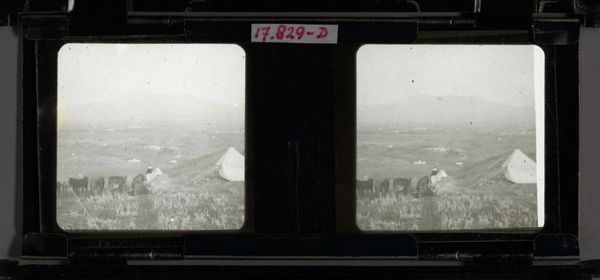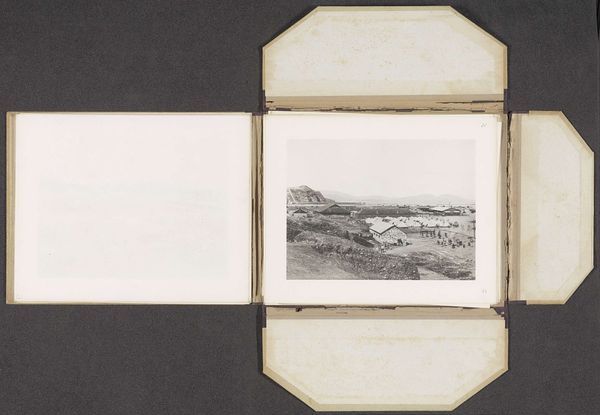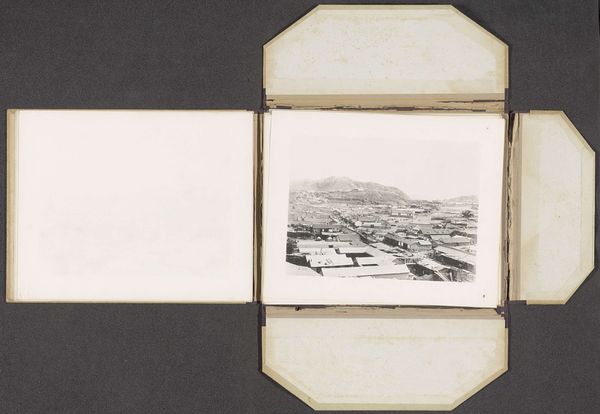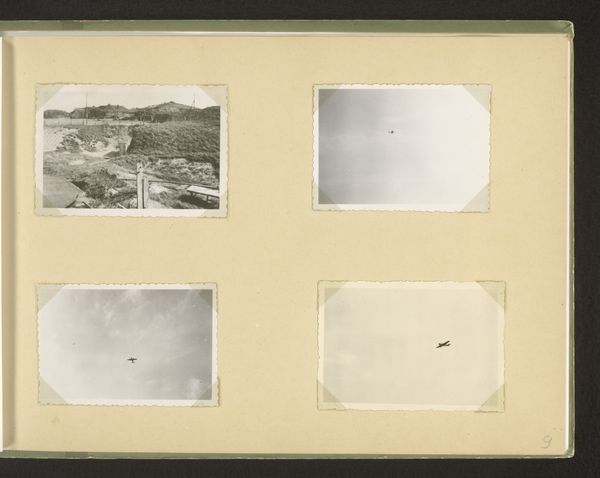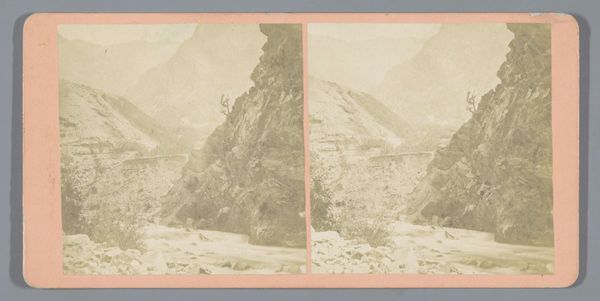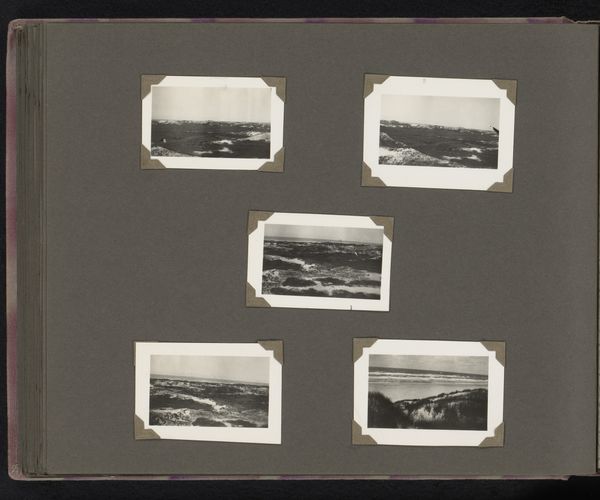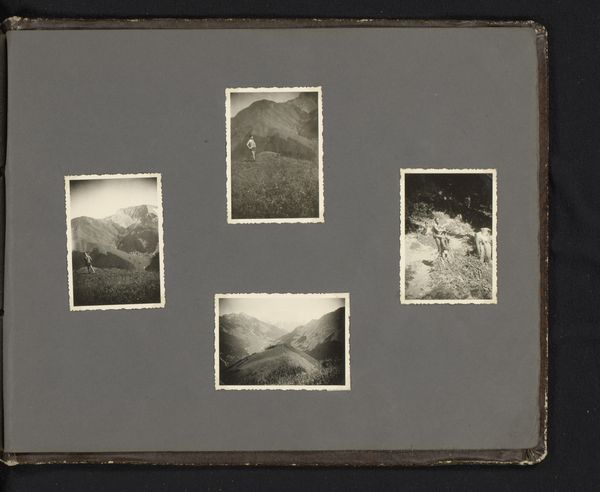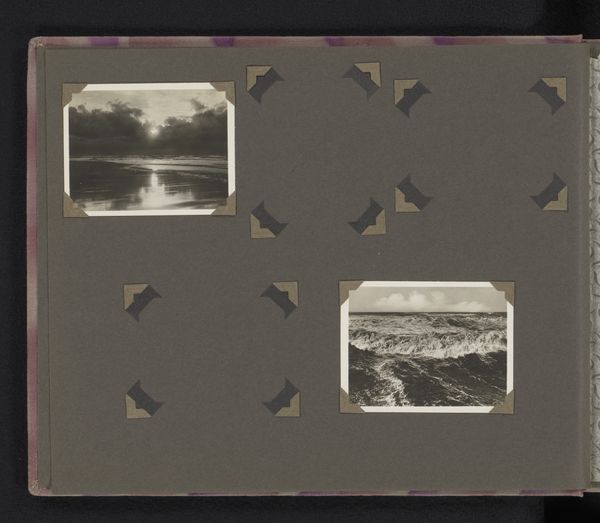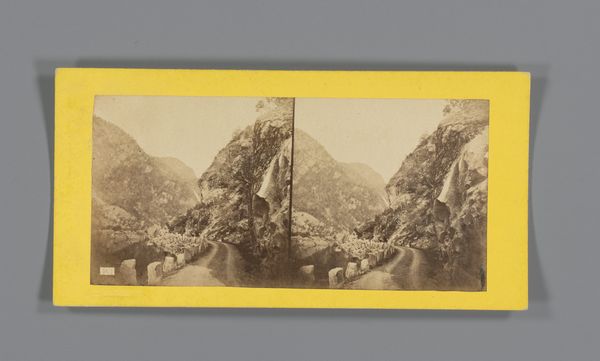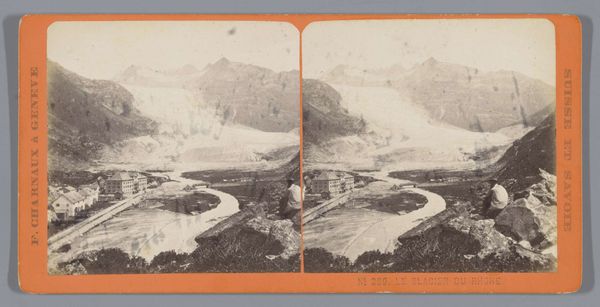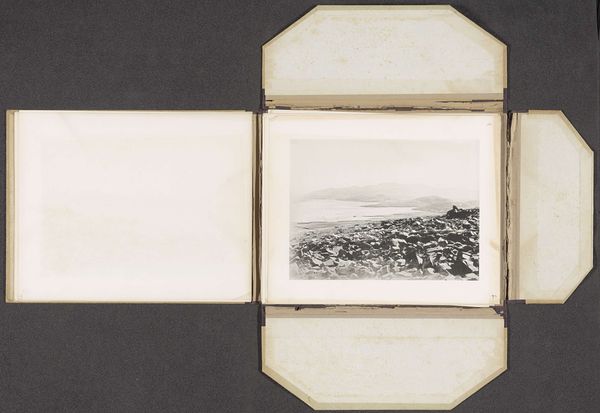
print, photography
# print
#
sculpture
#
landscape
#
photography
#
realism
Dimensions: height 44 mm, width 107 mm
Copyright: Rijks Museum: Open Domain
Editor: This photographic print, titled "Basis van Salomon August Andrée op Danskøya," created sometime between 1893 and 1923, depicts a stark, somewhat desolate landscape. There's a small structure that looks like a hut and then a gradual climb towards large rocky mounds. The image gives the impression of loneliness and struggle. What do you see in this piece? Curator: I see more than just a desolate landscape; I see a testament to human ambition and the fraught relationship between exploration and exploitation. This photograph captures the base camp of Salomon August Andrée's Arctic expedition, a project deeply embedded within the colonial narratives of the late 19th century. We must examine the socio-political context: who funded this expedition and what were their motivations? Was it scientific discovery or the pursuit of national glory? Editor: That's a perspective I hadn't considered. I was focused on the visual aspect, like the way the photographer captured the starkness of the Arctic. Curator: The aesthetic choices themselves are revealing. Consider the composition—a lone structure dwarfed by the imposing landscape. What does this imagery evoke about man versus nature? We might also explore how the act of photographing itself contributed to the objectification and 'conquering' of this space. Were the local indigenous populations consulted, or their territories respected? Editor: So, the photo isn't just a neutral record, but a loaded representation? Curator: Exactly. Every image, every expedition, operates within a complex web of power relations. This photograph is a document of a specific historical moment and must be unpacked with careful attention to issues of colonialism, environmental impact, and whose stories get told. Does knowing this expedition failed alter our viewing? Editor: Wow, I didn't realize how much could be read into one image. It really highlights the importance of context. Curator: Indeed. By acknowledging the intersectional histories embedded within the frame, we can have a richer, more critical understanding of the artwork and its legacy. Editor: I’ll never look at a landscape photograph the same way again. Thank you.
Comments
No comments
Be the first to comment and join the conversation on the ultimate creative platform.
